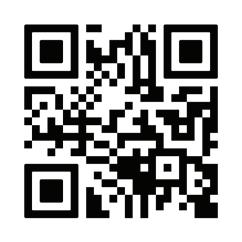On Call

LARSON ACRES & THE DAIRYLAND INITIATIVE
Collaboration, Innovation & Transformation in Dairy Farming


Collaboration, Innovation & Transformation in Dairy Farming


Learn more about our full team of experts and the services available at the Morrie Waud Large Animal Hospital:


UW Veterinary Care’s Morrie Waud Large Animal Hospital provides expert care for patients at every life stage — from routine procedures to cutting-edge diagnostics to care for high-performance equine athletes.
We understand the health needs of horses, ponies, and donkeys. Our team delivers specialized care in all aspects of equine medicine, surgery, sports medicine and rehabilitation, critical care, and acupuncture.
Under one roof at our UW–Madison facility you can access:
• Board-certified specialists in large animal medicine, surgery, sports medicine, diagnostic imaging, anesthesia, ophthalmology, and rehabilitation
• 24/7 emergency services
• Farrier care
• Standing CT scanner for imaging of standing, sedated horses without need for general anesthesia
• Upgraded procedure spaces
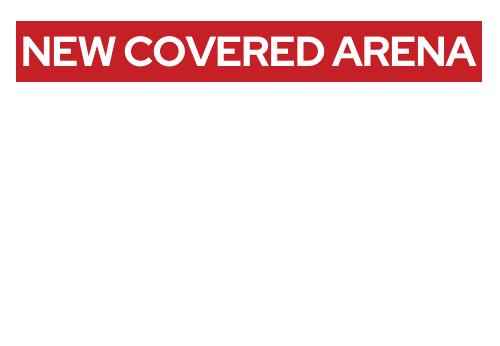



On the occasion of the Wisconsin Alumni Research Foundation’s centennial, the School of Veterinary Medicine celebrates the organization’s legacy and success, and its continued support through grants toward research programs and facilities, patents and licensing, WARF Accelerator, and WARF Ventures.
Page 10

The partnership between Larson Acres and The Dairyland Initiative demonstrates how collaboration, innovation, and science can transform modern dairy farming.
Page 14
Larson Acres: The Dairyland Initiative in Action
A special section for alumni of the Veterinary Science and Comparative Biomedical Sciences graduate programs
for
about graduates of the Doctor of Veterinary Medicine program
With a herd of 2,800 dairy cattle, the birth of a baby calf is a regular occurrence at Larson Acres, family owned and operated in Wisconsin for six generations. The partnership between Larson Acres and The Dairyland Initiative demonstrates how collaboration, innovation, and science can transform modern dairy farming. (Photo: Seth Moffitt/UW School of Veterinary Medicine).

©2025 Board of Regents of the University of Wisconsin System
I hope you’ve had a great first few months of 2025. While there were some frigid moments, the Levine family found ways to enjoy our first winter in Wisconsin! We skated on Lake Mendota, strolled through Pheasant Branch Conservancy, and my son, George, learned to snowboard. We admit that winter is beautiful in Wisconsin, but we’re ready to see what spring has to offer.
This month, we’ll be hosting our annual Celebration of Excellence honoring students, faculty, and staff who have won awards this academic year in research, teaching, and practice. This will include the first recipients of our new Collaborative Teaching Award and our Excellence in Patient Care and Diagnostic Medicine Awards. In addition, as we prepare to attend one of the biggest equine events of the year, the Midwest Horse Fair, we are thrilled that our new 14,000 square foot arena is now open.

It’s hard to believe we’re already almost to the end of my first full academic year as dean of the SVM. We’re proud to have 95 new DVM graduates about to enter the world and the workforce as practicing veterinarians. We’re also preparing to honor this year’s finishing house officers in June.
We continue to make progress developing our new innovative and integrated DVM curriculum. Module leaders and content development teams are hard at work so we’re ready for launch this August with the start of fall semester.
We’ve started our search for the first of four RISE-THRIVE faculty positions coming from campus, and are actively recruiting candidates for the SVM’s Artificial Intelligence faculty position, an infectious disease position, and a few select clinical disciplines. We’re preparing to announce the hire of our first surgical oncologist, which will further amplify our nationally-recognized comparative cancer center. While there have been a lot of headlines that potentially impact the UW and the SVM, we’re committed to moving forward thoughtfully and strategically to advance our mission and build on our reputation of leadership and excellence (read more on page 21).
Finally, the SVM has been actively developing its next five-year strategic plan. We invite you to scan the QR code below for more information and to contribute your thoughts. Our aspiration is to complete planning by July 1, and we look forward to sharing more in our summer issue.
Until next time ... On, Wisconsin!
Visit our strategic planning website



Jonathan Levine, Dean @uwvetmeddean @uwvetmeddean.bsky.social
Administration
Jonathan Levine , Dean
Richard Barajas, Assistant Dean for Diversity, Equity and Inclusion
Fariba Kiani , Chief Financial Officer
Lynn Maki , Associate Dean for Student Academic Affairs
Nancy Parkinson , Assistant Dean for Human Resources
Peggy Schmidt, Associate Dean for Professional Programs
Chris Snyder , Associate Dean for Clinical Affairs and Director, UW Veterinary Care
M. Suresh , Associate Dean for Research and Graduate Training
Kristi V. Thorson , Associate Dean for Advancement and Administration and Chief of Staff
Lauren Trepanier , Assistant Dean for Clinical and Translational Research
Editorial
Editor/Writer : Maggie Baum
Contributing Writers: Simran Khanuja, Katie Ginder-Vogel
Photography : Seth Moffitt
Design : Lexi Swain
Please send your feedback and comments to oncall@vetmed.wisc.edu, 608-263-6914, or On Call Editor, 2015 Linden Drive, Madison, WI 53706. www.vetmed.wisc.edu www.uwveterinarycare.wisc.edu facebook.com/uwvetmed facebook.com/uwveterinarycare x.com/uwvetmed x.com/uwvetmeddean youtube.com/uwvetmed instagram.com/uwvetmed linkedin.com/school/uwvetmed


bsky.app/profile/uwvetmed.bsky.social

bsky.app/profile/uwvetmeddean.bsky.social
On Call is also available online at: www. vetmed.wisc.edu/on-call
The printing and distribution of this magazine were funded by donations to the school. To make a gift, contact Heidi Kramer at 608-327-9136 or heidi.kramer@supportuw.org.

These expert responses come from Freya Mowat (Department of Surgical Sciences) and Maria Verbrugge (MS’97 DVM’03; Department of Medical Sciences).
• Do all common household pets require mental and sensory stimulation, or does it vary by species? All our companion animal species were originally wild (for example, dogs and wolves share a common ancestor), so providing a rich environment for them as best we can helps them express as many of their natural behaviors as possible.
• What are some signs that my pet may not be getting enough mental stimulation? Younger dogs may show signs of frustration including barking, begging, or destructive behaviors, while older dogs might show cognitive decline, such as disorientation or reduced interaction. Cats tend to display more subtle changes, but enrichment often brings out their unique personalities. Regardless of outward signs, increasing stimulation benefits your pet’s health and strengthens your bond.
• What are some fun, simple, and engaging activities I can do with my pet to keep them mentally stimulated? Interactive play is key! For dogs, nose work – like hiding treats for them to find – encourages creativity and positive thinking. There are many online resources and classes to help you find puzzles and games to play with your pet. Every pet is different, and some things that enrich one pet will be stressful to
another, so watch for things that your pet especially enjoys and focus on those.
• Are puzzle toys and treat dispensers effective for keeping pets mentally engaged as advertised? These toys can engage pets and reduce begging at mealtimes. While their short-term effects on behavior and welfare are positive, long-term benefits haven’t been thoroughly studied. Pair these toys with other enrichment activities, such as socialization and environmental interaction, to support your pet’s happiness.
• Are there specific games or exercises that support my pet’s cognitive health as they age? Playing food search games, using interactive toys, snuffle mats, treat dispensers, trick training, and more can all help keep your pet more agile and engaged. The Mowat Lab recently showed that older dogs that have sensory impairments had poorer cognitive health, so we recommend making sure you have your pet’s eyes and ears checked out at their annual wellness visit.
Friends of the school share their thoughts (and pets) on social media …

Dear Diary, One of my favorite humans, the blood donor coordinator at @uwvetmed, sent us this keychain to commemorate my donations in 2024. One paw print for each dog that received blood from me in 2024 - 15 total! Mom said it was a neat surprise to get in the mail. Signed, Clara the donor dog – @clarabarkston_wolfhound via Instagram
Congratulations to Gabriele Neumann, professor in the University of Wisconsin School of Veterinary Medicine, who was named a 2024 fellow of the National Academy of Inventors! This honor recognizes her contributions to virology and vaccine innovation, including the development of vaccines for influenza, Ebola and bird flu.

#WisconsinInnovates – Wisconsin Alumni Research Foundation (WARF) via LinkedIn


Do you have a question you’d like to see answered in an upcoming issue?
Send it to oncall@vetmed.wisc.edu For health issues concerns needing immediate attention, please contact your veterinarian directly.
The Dairyland Initiative and FAPM team participated in the School of Veterinary Medicine’s strategic planning summit. We discussed the current strengths of our programs and identified opportunities to better serve our constituents, among other key priorities. We had a lot of fun brainstorming in groups and learning more about the great work that is being done here at the University of Wisconsin School of Veterinary Medicine.
– The Dairyland Initiative via LinkedIn



When Joe and Arles Hendershott Love adopted Keanu in 2011, the first order of business was simply to nurse her back to health. The Border Collie, underweight at only 27 pounds and estimated to be just over a year old, had recently been rescued along with three of her newborn pups.
Intelligent and energetic, Border Collies are known for their herding abilities and working in search and rescue, therapy, and service dog roles. As Keanu stabilized, Joe – newly retired – started actively training to keep her brain sharp and busy. She quickly excelled at obedience, scent work, and tricks. Little did the family know that in the coming years Keanu would touch the lives of thousands of people, earn 81 different official titles and certifications, and establish a lasting legacy at the University of Wisconsin School of Veterinary Medicine (SVM).
“We took her as far as she showed interest in going – which was virtually boundless,” says Arles Hendershott Love. “Even with her 81 titles, therapy was where Keanu really shined. She had an innate ability to see when people were hurting.”
Over the next 10 years, Joe and Keanu trained and worked together to serve their surrounding community of Rockford, Ill., in countless ways. Hendershott Love was always by their side, often serving as her husband’s “ears” during training sessions and events due to his severe hearing loss.
Hendershott Love works for an organization that serves people with developmental disabilities, and so did Keanu. Amazingly, Keanu could get people who had been completely non-verbal to say a word or two. She served as a therapy dog to comfort clinicians, volunteers, and National Guard members at inoculation centers during the COVID-19 pandemic, for which she received numerous accolades including a Certificate of Recognition from the Illinois State Senate, United States Senator Tammy Duckworth, and Congresswoman Cheri Bustos. Keanu worked on “Goose Patrol” for the Rockford Park District, keeping geese off bike paths and golf courses. These are just a few examples of a list that goes on and on.
Unfortunately, at age 12, Keanu’s health took a rapid turn. During a training class, the Loves noticed she would yelp if her jaw was touched. A trip to the vet revealed an abscessed tooth, but additional tests revealed more concerning issues. Keanu declined quickly over the next 24 hours, leading her family to UW Veterinary Care (UWVC) in May of 2023.
They connected with Jordan Genovese (DVM’23), who was a fourth-year veterinary medical student at the time and now
by Maggie Baum
is a resident in emergency & critical care. Sadly, within a few hours there was a diagnosis of cancer. It had spread so far and so fast they made the incredibly difficult decision to euthanize Keanu.
“The bond between Keanu, Joe and Arles is a great example of the reason I became a veterinarian in the first place and chose emergency & critical care,” says Genovese. “Unfortunately, these times require selfless and difficult decisions on the part of owners. Since they cannot speak for themselves, pets rely on their families to communicate. Keanu was lucky to have had such incredible advocates.”
“She really went the extra mile checking on us, asking if we needed coffee or anything else,” Hendershott Love says of Genovese. “The level of care and compassion was incredible and much needed during a difficult time.”
Keanu’s unexpected passing was heartbreaking for both the Loves. They were on the way home to Rockford when they realized they had failed to ask for Keanu’s collar as a keepsake. Upon returning to UWVC, they were again met with kindness as reception team member Kurt Schuchardt went above and beyond their expectations to find and return Keanu’s collar.
“We were so thankful and didn’t know what to do with


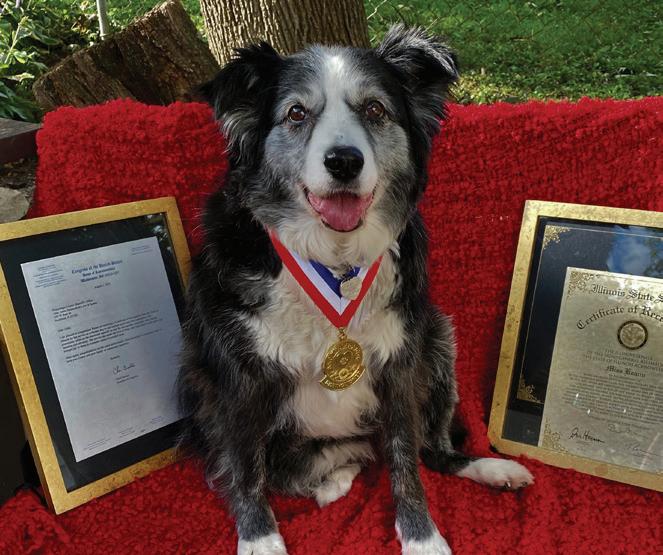
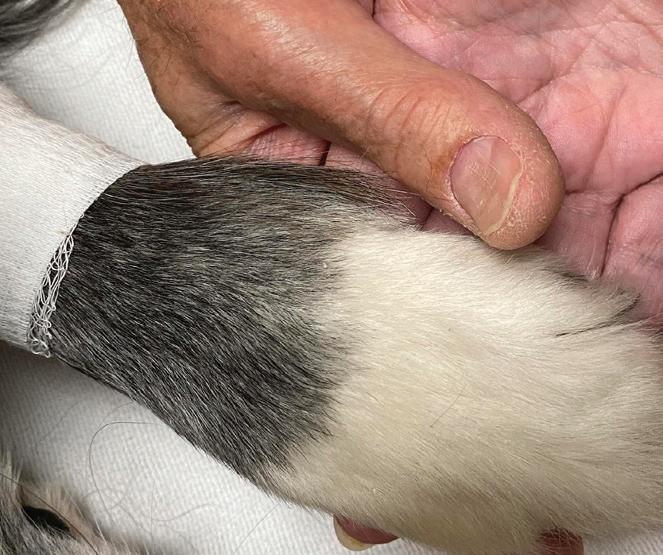



ourselves without Keanu, so the next weekend we went and dropped cookies off for the staff,” says Hendershott Love. It was at that time they connected and started building a relationship with Pat Bowdish (’03), a vice president at the Wisconsin Foundation and Alumni Association (WFAA), one of the SVM’s development team members.
In July of 2023, the Loves held a celebration fitting Keanu’s life. Condolences and donations poured in from hundreds of individuals, organizations, and state leaders. Working with Bowdish, the gifts created the Miss Keanu Love Excellence in Veterinary Medicine Memorial Scholarship Fund.
“When Keanu passed away, it was an honor to help Joe and Arles create a special scholarship in her name,” says Bowdish. “While each situation is unique and special, it’s not uncommon for many human memorials to total around $1,000. In this case, memorials for Keanu totaled nearly $3,000.”
Inspired by the outpouring for Keanu and what the Loves had learned about the SVM and UWVC, the couple also took advantage of the Speaker Match to make a gift to the Animals Need Heroes Too building expansion and renovation campaign. They also named a learning pod in the SVM’s Renk Learning Center and purchased a memorial brick in Keanu’s honor.
As anyone who has lost a beloved pet knows, a new companion can help ease the grief. In November of 2023, the Loves adopted Juno, a three-year-old Border Collie, who quickly became Joe’s constant companion and started training.
The Loves had several good months with Juno until the family got more bad news: what initially started as just a few aches and pains for Joe was diagnosed as a very aggressive case of multiple myeloma. He started treatment at the UW Health Carbone Cancer Center in Rockford, and Juno switched from star student to full-time therapy dog. She quickly adapted to her new role, supporting Joe through the difficult months of his illness and serving as a faithful companion for Hendershott Love when Joe had to be hospitalized for several weeks. When Joe passed away at home on October 6, 2024, Juno stayed snuggled at his side.
“The relationships we developed with the UWVC staff and with Pat, along with Joe’s love of Keanu and Juno, made my decision about where to direct memorial gifts in Joe’s honor an easy one,” Hendershott Love says. More than 100 memorials for Keanu and Joe have totaled nearly $9,500 to date, prompting her to summarize, “The story of Joe and Keanu is a story of two souls, one with four legs and one with two legs, who lived well and gave to others.”
Adds Bowdish, “The outpouring of support from those who knew Joe and Keanu has been humbling. Their love and generosity has positively impacted the lives of future veterinarians through Keanu’s scholarship, and will continue to do so for many years to come.”
As Hendershott Love moves forward, she continues to look for ways to support the SVM and has made adjustments to her own estate plan that will permanently endow Keanu’s scholarship and create a second endowed scholarship named for her and Joe. Both scholarships will provide perpetual support for future generations of aspiring veterinarians, a legacy Hendershott Love is proud to create.
She continues to train with Juno (shown with her in photo below) and says they help each other through the hardest days.
“After three years with a family, Juno was left at a shelter; then she found Joe and lost him so soon after,” Hendershott Love says. “But Juno has given me purpose. She sleeps with me, reads my moods, and is a cherished companion. To continue her training honors my husband’s memory and Keanu, too.”

Full story and more photos vetmed.wisc.edu/keanu
Explore ways to give vetmed.wisc.edu/giving


Keanu held an impressive 81 certifications and actively worked in a wide variety of areas. Among her many accomplishments:
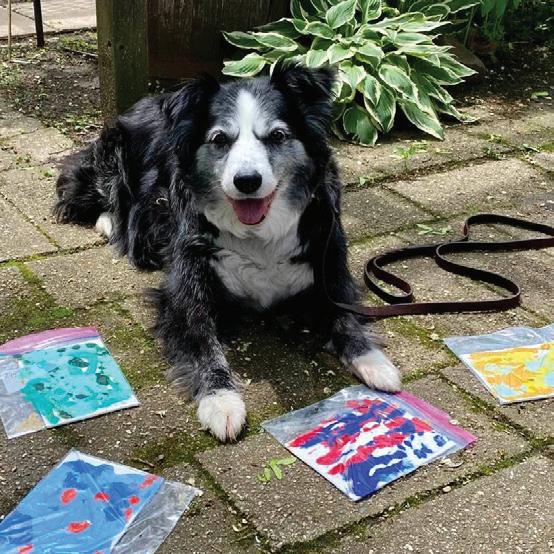
As a member of the Goose Patrol for the Rockford Park District, she helped keep geese off of bike paths and golf courses.
Keanu served as a therapy dog to comfort clinicians, volunteers, and National Guard members at inoculation centers during the COVID-19 pandemic.
Keanu and Joe were the first Border Collie Therapy Team to earn AKC Supreme Title.
Through “peanut butter painting,” Keanu participated in art shows that raised funds for a local pet food pantry. Her last show raised more than $3,000 along with two van loads of donated food (see photo above and image of painting in upper left next to headline).
Through Hendershott Love’s work as a volunteer for Crime Stoppers, Keanu worked as a therapy dog for the regional 911 center and Winnebago County Sheriff’s Office.
by Simran Khanuja
Since its inception in 2010, the Food Animal Veterinary Medical Scholars (FAVeMedS) program at the UW School of Veterinary Medicine (SVM) has been essential in cultivating the next generation of food animal veterinarians. This highly selective initiative identifies and facilitates mentorship of first-year undergraduate students who show qualifications and motivation in food animal veterinary medicine.
In collaboration with faculty from UW-Madison, UW-Platteville, and UW-River Falls – campuses rich in animal, biomedical, and veterinary sciences – up to four first-year students are admitted to FAVeMedS each year, with preference given to Wisconsin residents.
“From the beginning, the SVM wanted to partner with faculty and dairy practitioners to mentor and support these talented students on their path to practice as food animal veterinarians in our home state,” says Lynn M. Maki (’00), the SVM’s associate dean for student academic affairs.
Participants accepted into FAVeMedS are conditionally granted admission to the Doctor of Veterinary Medicine (DVM) program at the SVM after three years of undergraduate


studies. This admission is determined upon successfully completing rigorous academic, research, and mentored clinical experiences required of program participants. This early assurance allows students to focus on developing their skills and gaining relevant experience.
Between 2010 and 2023, the SVM has welcomed 32 students into the FAVeMedS program. Of these, 24 have successfully graduated, while the remaining eight continue their studies in the DVM program or other undergraduate coursework. A notable 83% of graduates have pursued careers in food animal practice across Wisconsin. A few alumni have branched out into diverse fields, including equine embryo transfer in Oklahoma, public health with the USDA in Texas, anatomic pathology instruction at UW Veterinary Care, and small animal veterinary practice in rural Wisconsin. These achievements highlight how hands-on experience paves the path to advanced education and prepares students to excel in food animal medicine.
Additional significant contributions to the field have been made by FAVeMedS alumni. Leah Secord (DVM’22), a graduate of the program, is currently a veterinarian at Waunakee Veterinary Service. Growing up on a dairy farm in Sauk City, Wis., Secord was already drawn to food animal veterinary medicine when she entered the program. Throughout her undergraduate years, she benefited from FAVeMedS’ structured mentorship and hands-on experience, including shadowing food animal veterinarians, working on large-scale dairy farms, and conducting research. One of the most valuable aspects of the program for Secord was her experience with research, particularly her undergraduate project assessing the quality of recycled sand bedding on a dairy farm.
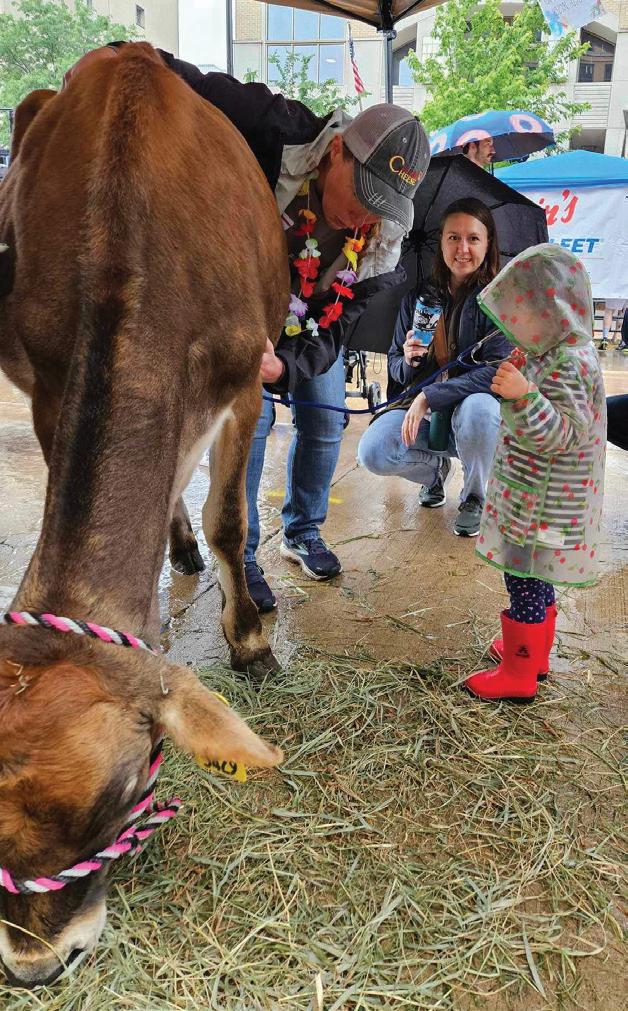
“The research component made me realize how practical and important simple on-farm studies are,” says Secord. “In practice, I’ve conducted my own trials improving calf rearing protocols and assessing the impacts of these changes. The program provides structure for gaining useful experience prior to entering veterinary school.”
Cole Anderson (DVM’19), another standout graduate, works at United Veterinary Service,


The research component made me realize how practical and important simple on-farm studies are. In practice, I’ve conducted my own trials improving calf rearing protocols and assessing the impacts of these changes. The [FAVeMedS] program provides structure for gaining useful experience prior to entering veterinary school. - Dr. Leah Secord
providing vital care to food animals across Wisconsin. Emil Walleser (DVM’00 PhD’23), originally from DeSoto, Wis., is now an AI Engineer at Mars, where he applies his veterinary knowledge in the realm of technology. Jason Kroll (DVM’17), who grew up on a small dairy farm near Highland, Wis., now practices at Lodi Veterinary Clinic, continuing his passion for food animal care. These alumni exemplify the program’s success in preparing graduates for diverse and impactful careers in veterinary medicine.
As the program looks to the future, it remains steadfast in its mission to support Wisconsin’s agricultural communities by training veterinarians who are not only skilled clinicians but also passionate advocates for food animal health. To enhance impact, the program has continually evolved its mentorship and support systems. According to Maki, FAVeMedS has deepened its focus on clinical mentoring opportunities and well as strengthening relationships with campus advisors at specific campuses.
“Relationships between FAVeMedS students and their faculty and veterinary mentors are invaluable,” Maki says. “These connections ensure that students have appropriate academic and professional support as they prepare for a career in food animal or dairy medicine.”
Bits of news from around the school
Congratulation to Gabriele Neumann (Department of Pathobiological Sciences), who has been named a fellow of the National Academy of Inventors (NAI) based on her work at the forefront of virology and vaccine innovation. “Dr. Neumann has made outstanding contributions to science, many of which she has been able to successfully commercialize and bring into the healthcare space,” says Dean Jonathan Levine. “Her contributions have saved thousands of lives, especially in vulnerable populations.”
Check your local TV listings! A recent episode of Shelter Methe Emmy award-winning series that tells uplifting stories about animals and the people who love them - is airing nationwide on PBS. The episode, “The Cancer Pioneers,” includes David Vail (Department of Medical Sciences) and focuses on how the inclusion of companion dogs with cancer in clinical trials is helping to advance cancer diagnosis and treatment in dogs and people.
Over the winter, the SVM and UWVC were recognized by the Wisconsin Department of Justice and the Bureau of Alcohol, Tobacco, Firearms, and Explosives for the care provided to K9 Tutty at our teaching hospital. Tutty, an ATF Accelerant Detection K9, faced significant challenges in early 2024 after being diagnosed with T3-L3 myelopathy and chronic intervertebral disc herniation. Thanks to the dedication of SVM’s Neurology, Rehabilitation, and Primary Care teams, Tutty made a full recovery, recertified, and returned to his important work.
Congratulations to Leah Owens (DVMx’25) for receiving the Merck Student Innovation Award from the American Veterinary Medical Foundation. Based on academic accomplishments and commitment to school and community, Leah was selected as the third prize recipient of this prestigious scholarship.
Starr Cameron (MS’21; Department of Medical Sciences) will assume the role of assistant dean for clinical and translational research on September 1, 2025, replacing Lauren Trepanier (Department of Medical Sciences) who will be retiring at the end of the year. The SVM is excited to have Dr. Cameron’s leadership in this important area and extends gratitude to Dr. Trepanier for her remarkable work elevating clinical research at the SVM.
The SVM is one of 10 teams that have been accepted to participate in the American Association of Veterinary Medical Colleges Systemic Wellbeing Course for spring 2025. The course is designed to teach college leaders how to promote wellbeing at their institutions. SVM representatives include Christina Frank (’12 MS’14; PAWSS counselor), Calico Schmidt (’88 DVM’92; Department of Pathobiological Sciences) and Lynn Maki (’00; associate dean for student academic affairs).
Nate Van Asselt (Department of Surgical Sciences) was awarded a grant from the American Kennel Club to explore a cutting-edge FLASH radiation treatment in dogs diagnosed with Osteosarcoma. The treatment involves high doses of radiation delivered in less than a second, and how that may result in tissue sparing.
by Katie Ginder-Vogel


The Wisconsin Alumni Research Foundation (WARF) and the University of Wisconsin School of Veterinary Medicine (SVM) enjoy a century-long partnership that began when UW-Madison biochemistry professor Harry Steenbock patented his discovery that irradiating foods with ultraviolet light increased their Vitamin D content. Steenbock, seeking to commercialize his discovery and return the proceeds to the university, suggested the creation of a patent management foundation to support inventors.
Steenbock established WARF in 1925 with College of Agriculture Dean Harry L. Russell, Graduate School Dean Charles S. Slichter, and a board of successful alumni to “promote, encourage, and aid scientific investigation and research at the University of Wisconsin by faculty, staff, alumni, and students.”
100 years later, as the organization celebrates its centennial, WARF continues to support SVM through grants toward research programs and facilities, patents and licensing, WARF Accelerator, and WARF Ventures.
Above: Dr. Harry Steenbock, one of WARF’s founders. Left: A rendering of the first Veterinary Science Building – now the Hanson Biomedical Sciences Building – for which WARF provided $475,000 in 1959. Photos on this page courtesy of WARF.
“The history of WARF is a fascinating and wonderfully great story of entrepreneurship and innovation,” says SVM Dean Jonathan Levine. “Seeing how WARF has grown, from its founding until now, shows the power of engaging faculty in the process of commercializing their ideas and protecting their intellectual property. WARF resources have benefited the School tremendously.”
The Department of Veterinary Science was established in the College of Agriculture, now the College of Agricultural and Life Sciences, in 1911. WARF provided $475,000 for the first Veterinary Science Building – now the Hanson Biomedical Sciences Building – in 1959, and the School of Veterinary Medicine was established in 1979. In 2020, WARF provided $15 million for the School’s newest building expansion and renovation.
“A highlight of our relationship with WARF is their investment in our new 150,000 square foot building, home to a hospital
for specialized companion animal services and state-of-theart research space,” says Levine. “WARF’s $15 million gift helped make both the expansion and renovations of our main building possible, allowing our team to fully actualize their vision of combining the hospital and research space to create a collaborative, innovative engine.”
The building’s light-filled research spaces are contemporary and open to facilitate interdisciplinary collaboration.
“They’re spread across areas that link well together, such as oncology, infectious disease, and immunology,” says Levine. “Walking through and looking at the graduate student spaces there and seeing how individuals are able to collaborate, brainstorm, and generate ideas is really powerful.”
Situating the new hospital and research labs in the same building enables the hospital to provide top-quality patient care and use innovative research in veterinary medicine.
“Our partnerships with the School of Medicine and Public Health have included developing therapies to benefit humans and animals and work on cancer biology and infectious diseases,” says Levine. “TomoTherapy®, which came from

Yoshihiro Kawaoka and Gabriele Neumann (both of the Department of Pathobiological Sciences) protect human health around the world, thanks to their research on the influenza virus and their contributions to influenza vaccine technology. In recognition of their innovative contributions to safe, effective, available vaccines that have improved humans’ quality of life worldwide, Kawaoka was named a fellow of the National Academy of Inventors (NAI) in 2023, and Neumann was named an NAI fellow in December 2024. Neumann has experience in both industry and academia, in Germany and the U.S., and Kawaoka is a global expert in infectious diseases and a member of the National Academy of Sciences.
Kawaoka’s research group at the SVM developed a new strategy to generate and manipulate the influenza virus, called “reverse genetics,” when Neumann was a postdoctoral researcher in the group. The research team created flu viruses from engineered DNA and developed vaccines to address specific virus strains, revolutionizing the production of influenza vaccines.
the School of Medicine and is now in one thousand human hospitals across the globe, was validated in our vet hospital on dogs with nasal cancer.”
WARF collaborates with School of Veterinary Medicine inventors to patent and license their intellectual property, which benefits humans and animals worldwide. Yoshihiro Kawaoka and Gabriele Neumann’s (both of the Department of Pathobiological Sciences) groundbreaking reverse genetics technology is a key component in the FluMist nasal spray influenza vaccine, which was included in a recent Wisconsin State Journal list of WARF’s Top 12 inventions.
In another example of how innovation in veterinary medicine impacts both animal and human health, emeritus professor of medical physics and serial entrepreneur Rock Mackie worked with the SVM to produce the Equina® technology. Equina was patented by WARF and was the basis for Asto CT, a startup company that provides stand-up CT imaging for horses. In 2019, Asto CT merged with Leo Cancer Care, an Australian company developing upright imaging systems for human cancer patients.
continued on next page

Left: Former SVM Dean Mark Markel, Kawaoka, and WARF CEO Erik Iverson.
Neumann.
WARF helped Kawaoka and Neumann patent and license their reverse genetics techniques, which have streamlined global vaccine production and enabled a faster response to evolving influenza strains and other respiratory illnesses. The technology is a key component of MedImmune’s FluMist nasal spray influenza vaccine, which was included in a recent Wisconsin State Journal list of WARF’s Top 12 inventions.
In 2007, Kawaoka and Neumann co-founded FluGen, a Madison-based company committed to preventing and treating influenza outbreaks worldwide, which is supported by WARF Accelerator. FluGen is collaborating with Bharat Biotech in India to develop a combination influenza-COVID-19 vaccine.
“Any time WARF compiles a list of the most impactful inventions in our 100-year history, the work of Yoshi Kawaoka and Gabi Neumann ranks high on the list,” says WARF CEO Erik Iverson. “We know the world will continue to benefit from their technologies well into our next century of collaboration.”
WARF Accelerator, founded by WARF trustees in 2009, speeds the development of technologies that have the potential to achieve commercial success, via targeted funding and expert advice from seasoned business mentors, known as Catalysts. WARF Accelerator helps UW inventors develop their technologies and bring them to the marketplace.
WARF Accelerator supported Tony Goldberg’s (Department of Pathobiological Sciences) project using next-generation sequencing to diagnose microbial food contaminates in food and related products and Adel Talaat’s (Department of Pathobiological Sciences) development of a diagnostic test that detects Mycobacterium avium paratuberculoisis (MAP) infection in dairy cattle before symptoms arise. Peter Muir

The SVM’s long partnership with WARF includes the area of oncology, where many faculty have contributed to cross-campus collaborations to develop and test novel cancer treatments, diagnostic technologies, and imaging tools that WARF has licensed and patented.
Emeritus professor of medical physics and serial entrepreneur Rock Mackie, Peter Muir (Department of Surgical Sciences), and Mark Markel (Department of Medical Sciences) worked with SVM to produce the Equina® technology, patented by WARF and the basis for Asto CT, a startup company founded in 2015 that provides stand-up CT imaging for horses. In 2019, Asto CT merged with Leo Cancer Care, an Australian company developing upright imaging systems for human cancer patients.
Mackie created TomoTherapy® in the late 1980s as a new way to treat cancer, spinning out a company, TomoTherapy Inc., in 1997, to develop the technology. In the early 2000s, Lisa Forrest (Department of Surgical Sciences) led successful TomoTherapy clinical trials in pet dogs with nasal tumors at UW Veterinary Care, which led to TomoTherapy’s widespread use in human medicine.
Like the TomoTherapy clinical trials, SVM has run other clinical studies in partnership with faculty inventors from around the university, and those collaborations have advanced cancer care for animals and humans.
“The history of UW and its cancer-focused faculty in the School
(Department of Surgical Sciences) and Susannah Sample (MS’07 DVM’09 PhD’11; Department of Surgical Sciences) received WARF Accelerator backing for two projects: the development of a canine genetic test for acquired peripheral neuropathy (APN) syndrome, and a project that seeks to identify the genetic variant associated with late-onset laryngeal paralysis polyneuropathy and develop a diagnostic test for the disease.
WARF Ventures funds and cultivates UW-Madison startup enterprises. WARF Ventures has backed startups including FluGen, which Kawaoka and Neumann co-founded in 2007 to prevent and treat influenza outbreaks around the world, and Transfur, a software platform that allows veterinarians to


The ASTO CT team worked with SVM to produce the Equina technology, patented by WARF and the basis for Asto CT, a startup company founded in 2015 that provides stand-up CT imaging for horses.
of Veterinary Medicine doing high-impact trials is a long one,” says Dean Jonathan Levine.
Levine is optimistic about the research taking place at SVM and sees many potential patenting and licensing opportunities with WARF.
Xuan Pan (Department of Medical Sciences) is partnering with the School of Medicine and Public Health, looking at cost-effective, at-home diagnostic tests for the presence of cancer in pets, which could lead to earlier cancer detection and follow-up screening with a veterinarian.
“Early detection is one way to have better outcomes with cancer treatment in people, and dogs and cats too,” Levine says.
David Vail (Department of Medical Sciences) has more than 30 years of experience designing and implementing comparative oncology clinical trials in companion dogs with cancer.
“He is the world leader in taking a therapy with high potential, vetting that therapy in his lab, and giving it a go/no-go signal,” says Levine. “If you think about bringing new therapies to market, that’s really powerful.”
request, send, and review patients’ medical records from clinic to clinic, co-founded in 2021 by then student Annie Pankowski (DVM’23).
Imbed Biosciences, founded by SVM nowemeritus faculty members Jonathan McAnulty (MS’89 PhD’94) and Charles Czuprynski (PhD’80), is another WARF Ventures-backed startup that makes products designed to meet the complex needs of different types of wounds, burns, and ulcers and speed healing.
“WARF Ventures has a strong history of supporting technologies and companies from students and faculty in veterinary medicine,” says Katie Rice, WARF Venture Relations Manager. “We look for meaningful ways to connect our network of investors and partners to help move these innovations to market.”
Dean Levine is optimistic about the SVM’s continued relationship with WARF. “Going forward, we hope to see innovation in areas such as AI, immunology, cancer, and biomedical devices,” says Levine. “With Chancellor Mnookin’s interest in entrepreneurship bringing more awareness of commercialization to faculty and students, that’s where WARF can help us. People don’t always realize their ideas have commercial potential.”
With the most active patents of any veterinary medical school or college, the UW-Madison School of Veterinary Medicine is poised to leverage its legacy of leadership, its new facilities, and WARF support to continue to create innovations that benefit animal and human health around the world.

The SVM’s Tony Goldberg (Department of Pathobiological Sciences) has collaborated with WARF since the early 2010s, when he patented two inventions. In 2018, Goldberg and Kathy Toohey-Kurth, now a professor at UC Davis, worked with WARF Accelerator to test a novel metagenomics method on bovine clinical samples and attract commercial interest.
“Tony is a rare breed of elite biomedical scientist and veterinarian who brings his veterinary expertise into his work on everything,” says Dean Jonathan Levine. “He’s very broad, and he’s excited by difficult problems.”
Most recently, Goldberg and Doctor of Veterinary Medicine/ PhD student Leah Owens (DVMx’25) filed a patent application in June 2023 for a novel method to accurately characterize parasites in samples. The research, which was published in Nature Communications in January 2024, addresses the challenge of diagnosing parasitic infections in animals or humans.
“We were able to crack this thorny problem because Leah spent so much dedicated time carefully designing and testing methods,” Goldberg says.
Owens, who has an MS in molecular biology, designed the method, dubbed VESPA (Vertebrate Eukaryotic endoSymbiont and Parasite Analysis), which generates a comprehensive list of all the parasites in a biological sample and their relative abundance.
Owens created a mock community test reagent for standardization named EukMix after scouring the School for unusual parasites.

“If someone came across a weird parasite, she’d go over and collect a piece of it,” says Goldberg. “She got an unbelievable collection of diverse parasites, extracted their DNA, and cloned their genes into a bacterial vector, so we had equal and unequal mixtures of these parasites’ DNA in a tube. That was our standard, and we compared results from the new method to what we knew we had put into our mock parasite community.”
Goldberg says he appreciates WARF’s support in commercializing ideas.
“When I make discoveries, I definitely think about whether it should be an invention disclosure to WARF,” he says. “All of us benefit from WARF being here. It’s a pretty amazing organization.”
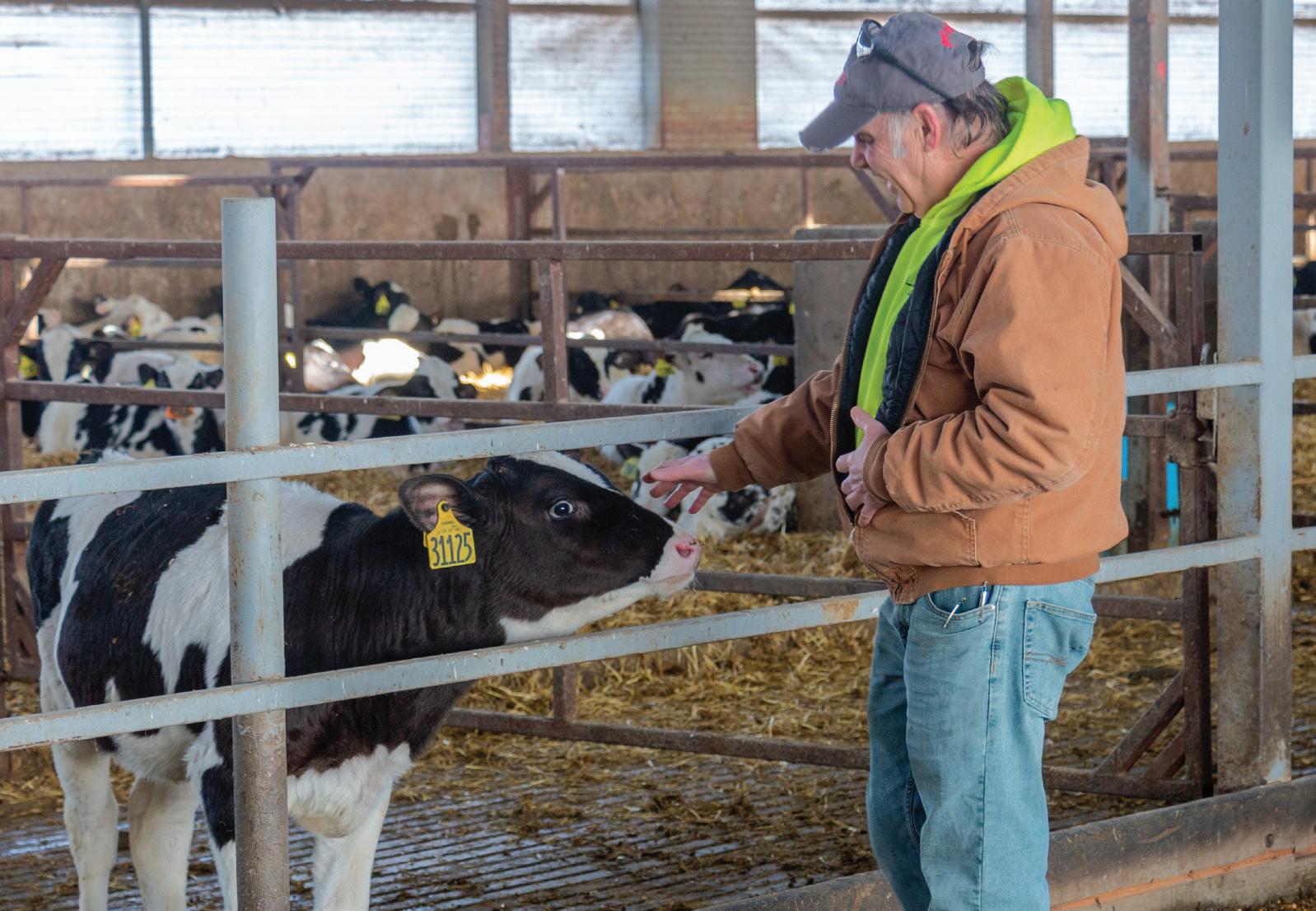

by Simran Khanuja and Maggie Baum
The rhythmic hum of milking machines fills the air as dawn’s first light spills over the rolling hills of Evansville, Wisconsin. At Larson Acres, another day begins much like the thousands before it. Cows move through the barn, some of about 70 team members tend to their care, and generations of knowledge and experience guide each decision. But behind the familiar routines is a story of progress. This multi-generational dairy farm isn’t just preserving tradition: it’s redefining and improving it for the future.
With a steadfast commitment to sustainability, animal welfare, and quality, Larson Acres has earned national recognition, recently receiving the 2024 World Dairy Expo Dairy Producers of the Year award and the National Mastitis Council (NMC) Milk Quality Award. These honors are a testament to the family’s dedication by balancing the past with the future and ensuring that each new sunrise brings not just another day of farming but a step forward in the industry.
“The Larson family has been farming in southern Wisconsin for nearly a century,” says Sandy Larson (‘94), fifth generation family member who serves as General Manager of Larson Acres. “By focusing on three key pillars — quality, pride, and family — our farm is truly a superior example of modern dairy farming.”
This commitment to excellence is exemplified in the farm’s partnership with The Dairyland Initiative at the University of Wisconsin School of Veterinary Medicine. The Dairyland Initiative (DI), a science-based outreach program, has been instrumental in helping Larson Acres implement best practices for cow comfort, milk quality, farm sustainability and more. While its roots extend back several more years, the DI was officially founded in 2010. Through research, consultation, and educational resources, DI has provided Larson Acres with the tools to make strategic, science-backed decisions that positively impact and advance their farming operations.
One notable outcome of the Larson Acres and DI collaboration is the implementation of advanced ventilation and heat abatement systems in the farm’s lactating cow and calf barns. With Wisconsin’s summers bringing rising temperatures, ensuring cow comfort is more crucial than ever. The DI has helped guide Larson Acres in installing a Positive Pressure Tube Ventilation (PPTV) system in their calf barns and to enhance comfort and cooling in their adult cow barns, significantly improving airflow, reducing heat stress, and promoting overall animal health.
“Larson Acres is an example of a farm that pushes us to come up with answers to important questions while being open to

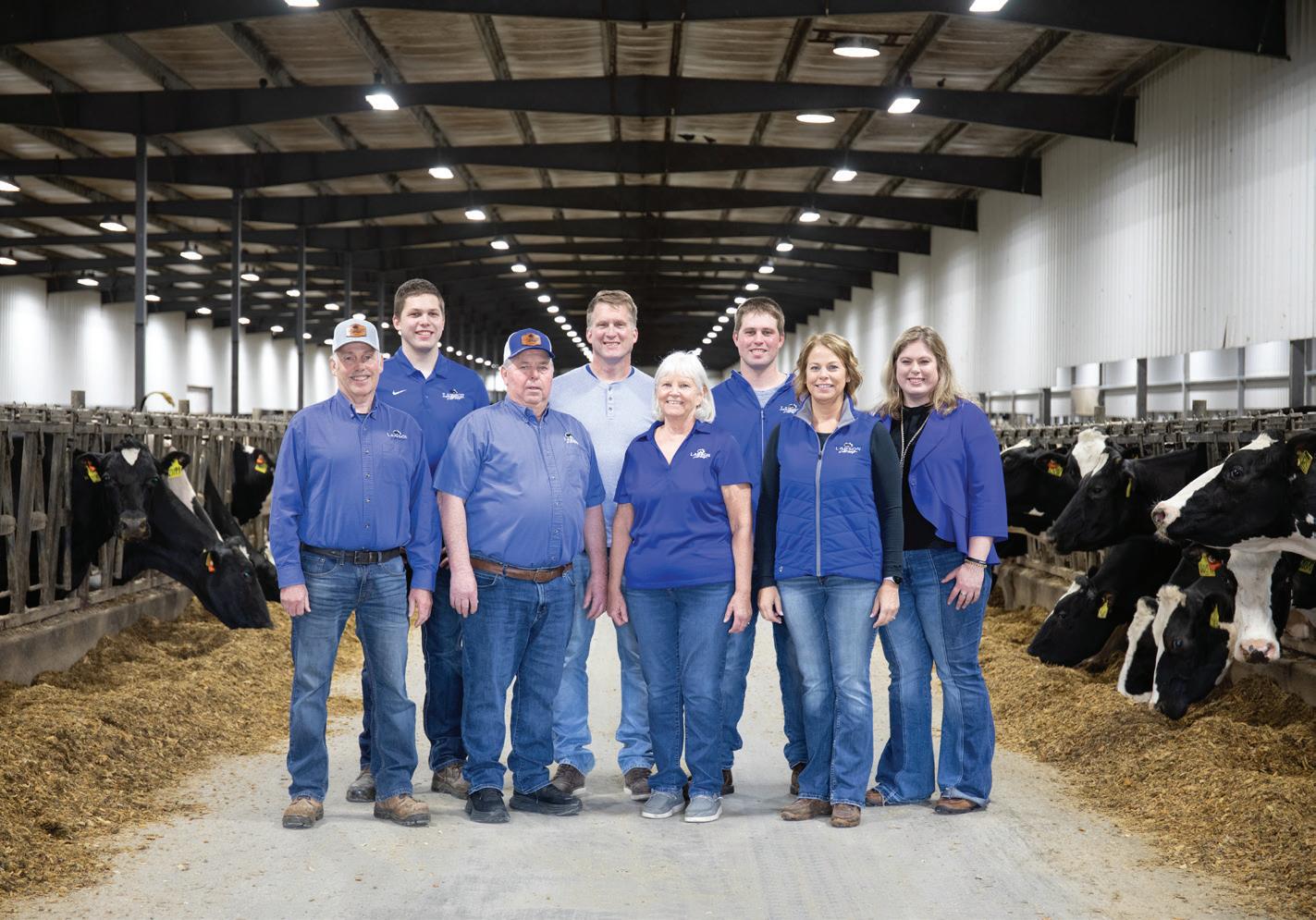
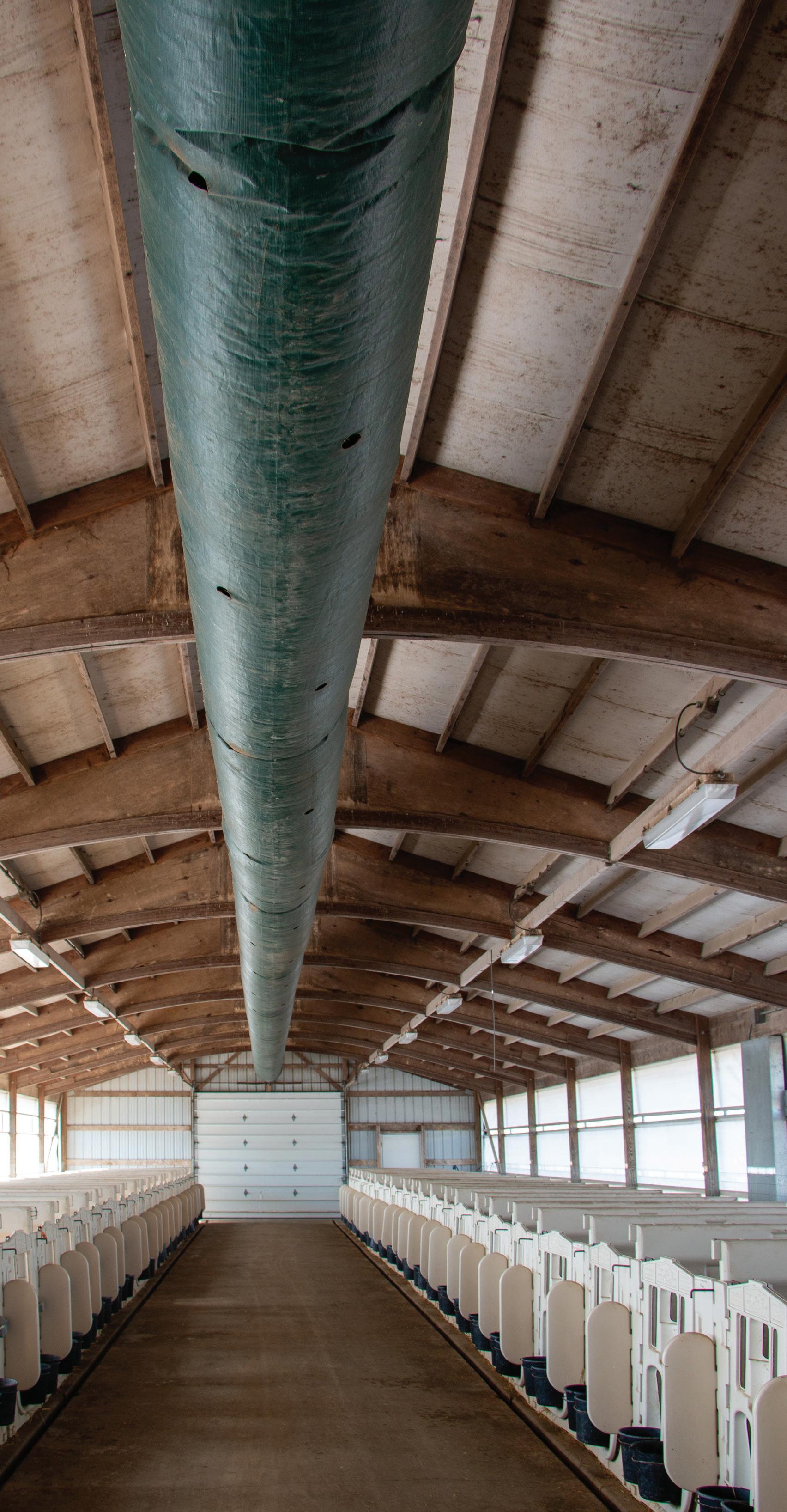
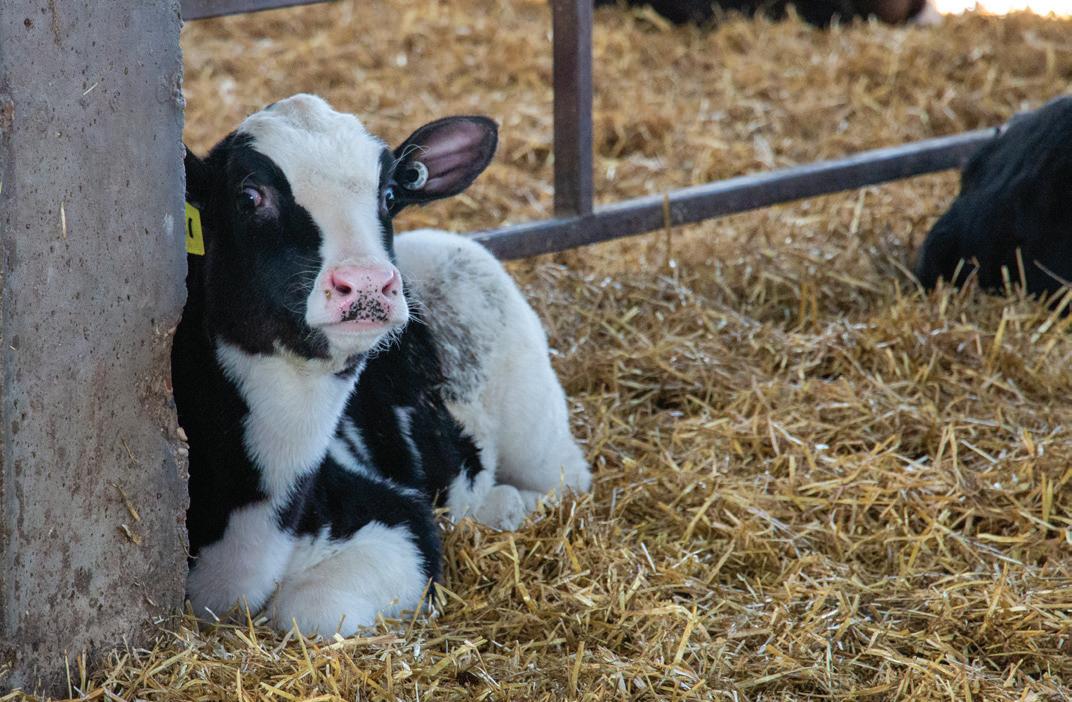
Center photo: The DI has helped guide Larson Acres in installing a Positive Pressure Tube Ventilation (PPTV) system in their calf barns and to enhance comfort and cooling in their adult cow barns, significantly improving airflow, reducing heat stress, and promoting overall animal health. Left to right: Mike Larson; the Larson Acres landscape; current Larson family leadership; a young calf, just one member of a herd of 2,800. (team photo courtesy of Larson Acres)
trying new innovations such as using PPTV,” says Courtney Halbach, Outreach Specialist for DI.
Nigel Cook (Chair, Department of Medical Sciences), project leader of DI, highlights the long-standing collaboration with Larson Acres, calling it a model farm for design and development. Since representatives from the initiative first visited in 2003, the farm has embraced numerous improvements guided by DI research and recommendations. Over the years, these efforts have included bedding management changes, stall enhancements, ventilation upgrades, the construction of one of the first cross-ventilated barns for adult cattle, and state-of-the-art calf facilities. Through this partnership, Larson Acres has not only implemented these advancements but has also welcomed DI to showcase them in on-farm training sessions and tours – for soon to graduate (or enter the workforce) veterinary students as well as industry partners and peers – helping to share best practices with the broader dairy community.
“We all need farms like Larson Acres,” says Cook. “They want to do the best for their cows, and they are not afraid to take a risk and make big changes if a convincing argument can be made for improvement.”
continued on next page


For Mike Larson, Dairy Manager of Larson Acres, dairy farming is more than just a business – it’s a legacy built on generations of dedication. As part of the fourth generation of Larsons to farm in the Evansville area, he takes pride in continuing the family tradition as the family is actively engaging and transitioning leadership to its sixth generation. That deep-rooted commitment made his early connection with the DI feel natural. Mike recalled feeling comfortable from the start, having previously worked with the University of Wisconsin’s Dairy Science Department and School of Veterinary Medicine before the initiative was even established.
“One of the first major building projects where we sought guidance from The Dairyland Initiative was our expansion in 2010,” says Mike Larson. “I worked closely with Dr. Cook on stall designs and other key aspects, and their input was invaluable. The initiative became a crucial part of our team. Just this year, I turned to them again for advice on updating our nursery barn ventilation. Over the summer, they developed a plan for additions and installations, making the process seamless. They’re incredibly easy to work with.”
Adds Jim Trustem (‘92), Larson Acres’ Dairy Herd Manager, “The DI demonstrated the need for moving the baffles in the cross-ventilated barn through wind speed analysis and smoking the barn to show air flow. Their results were conclusive, and we used them and Dr. Cook’s recommendations to ultimately improve ventilation.”
Receiving the honor of being named the 2024 Dairy Producers of the Year is a testament to years of dedication, innovation, and collaboration at Larson Acres. Reflecting on the achievement, Sandy Larson credits a combination of key factors.
“This award is the culmination of working together as a family, developing superior employees, and collaborating with industry leaders such as The Dairyland Initiative,” she says.
“It all starts with the calves and providing an environment where they can thrive. Designing the nursery barns to include PPTV is an excellent example of that, as is the addition of cross-ventilation in some barns.”
Beyond ventilation, DI has played a key role in helping farms like Larson Acres rethink barn design entirely. The initiative was founded with the goal of providing farmers with the best available information to make informed decisions about facility design and improvements for dairy cattle. To support this mission, DI created a free website, giving farmers and their consultants easy access to up-to-date resources, as well as virtual tours showcasing farms that have implemented its recommendations. Additionally, the initiative conducts on-site visits to farms like Larson Acres, offering hands-on troubleshooting and tailored solutions to address specific challenges.
“We even went beyond the website to create workshops that are held twice a year to train people how to design facilities,” says Cook. “The attendees are builders, lenders, farmers, consultants, vets, and nutritionists, and all bring their own perspectives. We have learned as much from these interactions as they have, and it’s been a way to expand our knowledge in a nonthreatening manner – we are not competing against the builders, we are inviting them and bringing them on board while also listening to and reacting to their concerns.”
More recently, DI expanded its reach by launching a podcast, with Halbach and Cook releasing new episodes every two weeks to provide up-to-date information in an accessible format. Since June, the podcast has garnered more than 10,000 listens, reflecting the industry’s growing interest in innovative dairy practices. But the DI’s impact goes beyond sharing information – it’s about fostering meaningful collaboration. At Larson Acres, this partnership extends beyond the implementation of new systems, involving close work with consultants and experts who bring specialized knowledge to


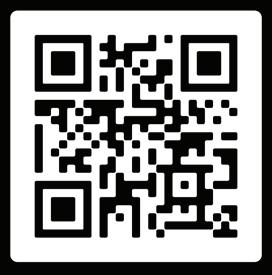
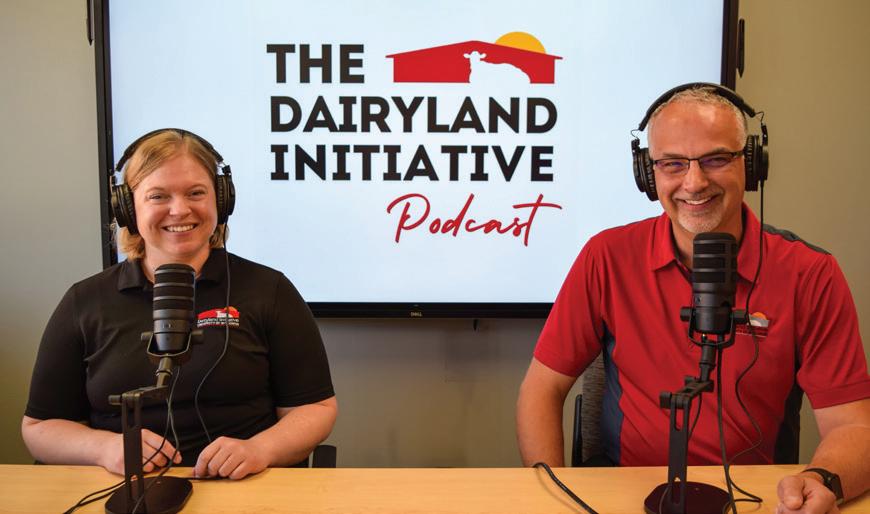
help the farm continuously improve.
Scott Pertzborn (’83 DVM’87), a veterinarian with Lodi Veterinary Care, and Zach Janssen, of Wisconsin-based Grande Cheese Company (which Larson Acres supplies), have worked closely with Larson Acres to ensure DI recommendations are carried out with precision. As Larson Acres works to balance cow comfort with high-quality milk production, experts including Pertzborn and Janssen help bridge the gap between research and practical application.
“We rely on two-way communication to come up with practical solutions that are informed by research as well as the people directly involved on the farm,” says Halbach. “It’s imperative that recommendations are made with feedback from caregivers if they are to be successfully implemented. Many of our recommendations have been fueled by our clients’ drive to continuously improve, and Larson Acres is one of those farms that challenges us to come up with what’s best for their cows and the wider dairy industry as a whole.”
2,800 Holsteins 109 lbs.
2,800 Holsteins milked in both a conventional double-20 parallel parlor and a cross-ventilated double-22 parallel parlor
The Larson Acres herd averages 109 pounds of energy-corrected milk daily, with 4.68% fat, 3.4% protein, and a 56,000 somatic cell count
The partnership between Larson Acres and The Dairyland Initiative demonstrates how collaboration, innovation, and science can transform dairy farming. Larson Acres’ success in implementing advanced ventilation systems and heat abatement strategies is just one of many ways DI’s research and guidance have made a tangible impact on dairy farms across Wisconsin and around the world (see map), emphasizing the sustainable practices, enhanced cow comfort, and high-quality milk production that is at the heart of the industry’s continued success.
As Larson Acres looks ahead, this deep-rooted commitment to progress remains unwavering.
“Growth in some capacity will be part of our future,” says Sandy Larson. “We look forward to continuing to collaborate with and learn from The Dairyland Initiative, whether that includes on-farm consultation, risk assessments, or just being a part of our team of consultants that provides valuable insight and guidance.”
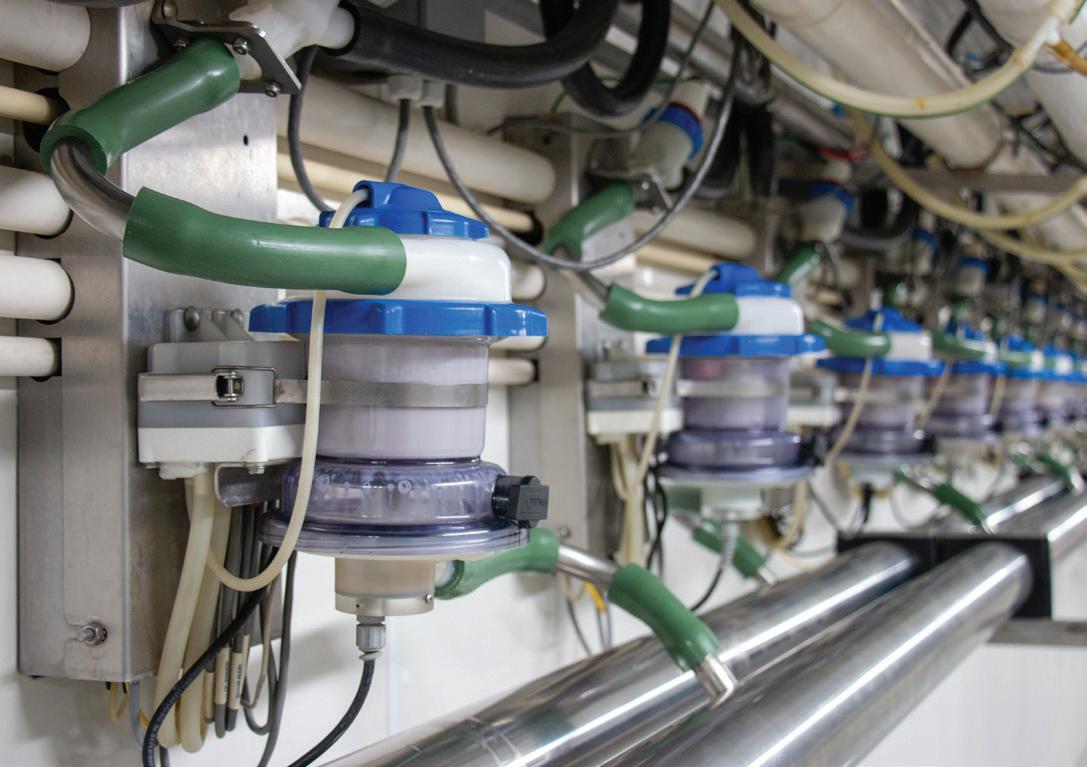
by Katie Ginder-Vogel
In humans, peripheral nerve degeneration can cause progressive muscle weakness, foot deformities, and sensory deficits. One way to learn about human hereditary peripheral neuropathy (HPN) is to study domestic dogs with neurodegenerative diseases. For example, Labrador Retrievers often experience a late-onset peripheral neuropathy (LPN) (commonly known as laryngeal paralysis or GOLPP) and are a promising canine model for gaining insights about peripheral neuropathy in humans. Ryan Anderson (BS’22), a third-year Doctor of Veterinary Medicine/PhD student, has been awarded a National Institutes of Health (NIH) F30 Fellowship to study the pathologic and molecular basis of LPN and establish it as a canine model for HPNs. The NIH F30 fellowships are prestigious, six-year fellowships that support research and clinical training for students in dual-degree programs, like Anderson.
Anderson’s project, entitled “Establishing the neuropathologic and molecular features of a spontaneous canine model of peripheral neuropathy,” will investigate the neuropathologic architecture of the neuromuscular junction and corresponding peripheral nerves in LPN-affected Labradors and a control group of unaffected dogs. He will also use a novel cell culture neuron model to study cellular dysfunction associated with the disease.
“The work performed under this award will contribute to the establishment of Labrador LPN as a spontaneous canine model for human axonal HPNs,” Anderson says. “In the future, this model will be used as the critical link to human clinical trials, serving to assist in the discovery of a treatment for this disorder.”
Anderson will conduct his research in the labs of his PhD advisor, Susannah Sample (MS’07 DVM’09 PhD’11; Department of Surgical Sciences) and one of his PhD mentors, Masatoshi Suzuki (Department of Comparative Biosciences). Project co-sponsor John Svaren (Department of Comparative Biosciences) will also support Anderson’s work.
Anderson has identified a novel variant in a robust candidate gene that strongly associates with LPN-affected Labradors. He aims to understand how this variant contributes to axonal degeneration. He also plans to evaluate the functional effect of the variant on its gene and protein product.
“Uncovering the molecular mechanisms contributing to axon degeneration in Labrador LPN is essential in identifying

overlapping treatment targets between Labrador LPN and human axonal HPNs,” he says. “We will identify abnormalities associated with Labrador LPN, using a novel induced-motor neuron model.”
Anderson grew up in Racine, Wis., caring for his family pets, and attended UW-Madison to study biomedical engineering with a focus on tissue engineering and biomechanics. While earning his degree, he completed a Biocore honors certificate, which sparked his interest in research. He was one of 100 undergraduates at the UW to be awarded the prestigious Hilldale Research Fellowship and joined the Comparative Genetics and Orthopeadic Research Laboratory, co-directed by Sample and Peter Muir (Department of Surgical Sciences) to study LPN in Labrador Retrievers.
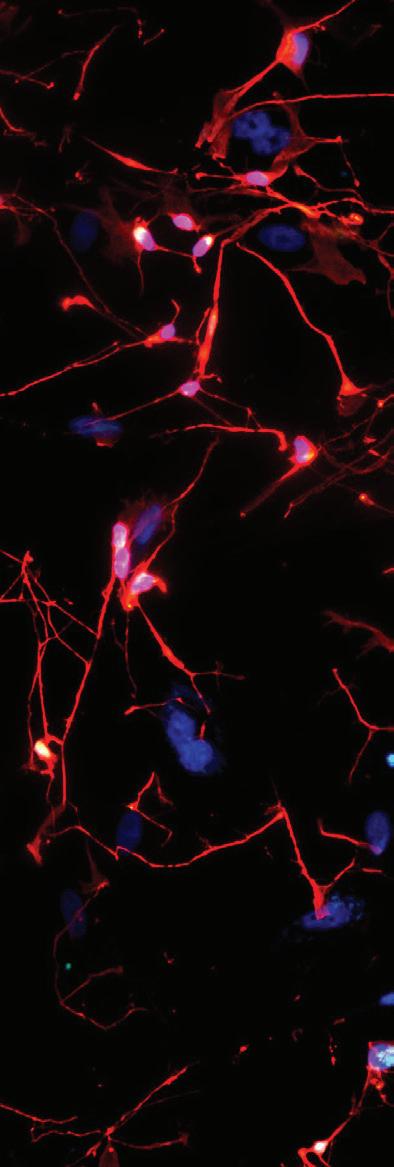
“Witnessing the debilitating effects of this condition motivated me to delve deeper into understanding the disease and working toward potential treatments,” he says. “At the same time, observing Dr. Sample and Dr. Muir’s roles as veterinary clinician-scientists inspired me to pursue a similar career, leading to my decision to apply for the DVM/PhD program at UW-Madison.”
His PhD research in Sample’s lab focuses on identifying the neuropathologic features, genomic alterations, and molecular abnormalities associated with Labrador Retriever late-onset peripheral neuropathy.
“Recently, I leveraged my tissue engineering background to develop a novel neuron cell culture model to study motor neuron diseases—an approach that had not previously been applied to canine cells,” he says.
Anderson also recently developed a more efficient and reproducible way to generate the induced-motor neurons from canine primary dermal fibroblasts and has begun to write a methods manuscript. This new model offers new possibilities for studying age-related canine neurodegenerative diseases, allowing for a deeper understanding of disease mechanisms and potential therapeutic strategies in dog models.
Anderson has been generating data on age-maintenance of the induced-motor neurons and analyzing pathologic features of

left: Ryan Anderson. Left: Image shows lab-grown motor neuron cells (the type of nerve cells that control muscle movement) that Anderson transformed from a dog’s skin cells. The bright colors in the image come from special stains that highlight different parts of the cells. Blue (DAPI) marks the nuclei, or “command centers,” of the cells. Green (HB9) identifies motor neurons. Red (TUBB3) highlights the structural framework of neurons, like scaffolding that helps them grow and function. Together, these glowing colors reveal a glimpse into the work of reprogramming cells to better understand and develop treatments for canine neurodegenerative diseases. (photos courtesy of Ryan Anderson)
inducedmotor neurons grown from dogs affected with a late-onset peripheral neuropathy. As a follow-up to his discovery of the novel variant that associates with Labrador late-onset peripheral neuropathy, he is finalizing a transcriptomic analysis of peripheral nervous system tissue in affected and control dogs and collecting more tissue samples for follow-up molecular and neuropathologic analyses.
“I am a co-first author on a manuscript titled ‘Cellular and transcriptomic changes by the supplementation of aged rat serum in human pluripotent stem cell-derived myogenic progenitors,’” Anderson says.
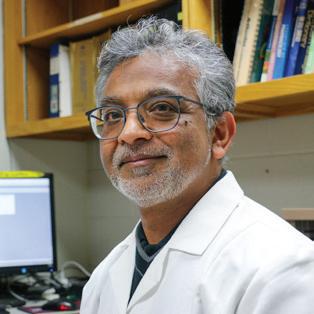
This year has delivered a lot of headlines about new orders and initiatives of the federal government – some of which have the potential to disrupt our work and at the School of Veterinary Medicine (SVM) and the UW. These orders pertain to such critical areas as federal funding and indirect payments; laws and policies related to diversity, equity, and inclusion; federal immigration enforcement; and more.
As I write this (the first week of March), we are diligently monitoring and navigating the complexities of the situation with the same dedication and vision that guides the important work we do every day. We remain committed to an unmatched educational experience for the next generation of veterinarians and biomedical scientists; potentially life-saving research and clinical trials that benefit animal and human health; and leading-edge, compassionate veterinary care in our teaching hospital.
Comparative Biomedical Sciences is proceeding with graduate student recruitment for students who will start this fall. In February, we hosted a group of recruits who interviewed with faculty, met CBMS students, and toured the SVM and campus. Our program operates on a Direct Admit basis, which means that each student admitted chooses and is chosen by a major professor who commits to mentoring that student based on the resources available in their lab. We expect our Fall 2025 class will include about 10 students. Special thanks go to Susan Thideman for coordinating a welcoming experience for these talented
Anderson hopes to become a board-certified veterinary neurologist and clinician-scientist with his own research laboratory at a top-tier research university like UW-Madison.
“I would like to conduct basic and translational research in the fields of neuroscience, genetics, and cellular/molecular biology, while also spending time treating patients with neuromuscular disorders in a veterinary teaching hospital,” he says.
Anderson is the president of the National Association of Veterinary Scientists, a student-led organization dedicated to advancing veterinary research and fostering a community that values the interconnected relationship between people and animals.
“In my free time, I love reading, listening to podcasts, running, working out, visiting local coffee shops, playing soccer, and spending time with my two cats, Kai and Lyla,” he says. “And after nearly seven years in Madison, I still enjoy exploring the city every weekend with my partner, Emily.”
recruits, showcasing the many strengths of our program.
We will continue to move forward and support our campus, statewide, and global communities in close partnership with UW leadership. We encourage you to follow current updates on the campus Federal Relations page (scan QR code).
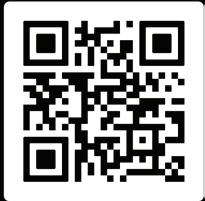
In a recent statement, UW-Madison Chancellor Jennifer Mnookin said, “As these federal orders, actions, and directives continue to roll out, some of them create deep concern for and potential conflict with our long-held values like evidence-based research, academic freedom, pluralism, diversity of identity and viewpoint, support for our community and nondiscrimination, among others. These have been, and remain, core values for our mission and our institution. We are living in precarious and uncertain times and recognize the toll that this uncertainty takes. We offer our deepest appreciation to everyone for your continuing focus on our mission.”
We thank Chancellor Mnookin for her steadfast leadership. As challenges arise, I will be here – along with Dean Jonathan Levine –to listen and collaborate on the strategies and solutions necessary to protect and advance the SVM’s work.
M. Suresh Associate Dean for Research & Graduate Education
John. E Butler Professor in Comparative and Mucosal Immunology
by Simran Khanuja
Chris Booth (’96 DVM’00) approached one of his family’s best cows, stuck in a ditch in the pasture. Her sides heaved with labored breaths, and her head hung low. She was suffering from milk fever, a common metabolic disease in dairy cows. While his parents were away for the weekend, Booth, responsible for the herd, rushed to the barn to bring back calcium as treatment, anxiously watching for any sign of recovery. Gradually, the cow perked up, struggled to her feet and made her way back to the barn. That moment inspired Booth’s future in veterinary medicine.
Booth is one of seven veterinarians at Dairy Doctors, a Plymouth, Wisconsin-based practice dedicated to dairy herd health. The practice embodies a legacy of care, innovation, and collaboration rooted in the training six of the seven team members received at the University of Wisconsin School of Veterinary Medicine (SVM).
For Booth, the journey to becoming a veterinarian began on his family’s 50-cow dairy farm in Cuba City, Wis., where he was actively involved in 4-H, FFA, and the Wisconsin Junior Holstein Association. His passion deepened during his undergraduate years at UW-Madison, where he helped conduct research on a mastitis vaccine.
“My UW education gave me valuable opportunities to grow both in knowledge and practical skills,” says Booth. “The biggest lasting impact from my time at UW was the invaluable knowledge and experience I gained from the Food Animal Production Medicine instructors. They were a dream team for any future dairy veterinarian, providing an outstanding foundation.”
Booth’s journey is one of many unique paths that led to Dairy Doctors. Eric Weinhold (DVM’92), originally from Glendale, Wis., found his passion for dairy veterinary medicine working summers at Cedarburg Vet Clinic. After graduating from the SVM, Weinhold joined Dairy Doctors following a clinic merger. He credits the group’s teamwork and collective commitment to exceptional service as defining qualities of the practice.
“One thing we always do at the end of the day is share stories and experiences from the week,” says Weinhold. “This often


leads to further growth in my education. I’ll always be a ‘practicing veterinarian,’ always striving to improve.”
Jeff Bleck (’92 DVM’96) was drawn to Dairy Doctors for its location near progressive dairy farms and its focus on family and work-life balance. Growing up on a Registered Holstein herd in New London, Wis., Bleck’s passion for dairy farming and veterinary medicine developed early.
“The Food Animal Production Medicine instructors at the SVM played a major role in shaping me as a veterinarian,” says Bleck. “The knowledge and training I received from them made me the vet I am today.”
A less conventional route brought Brandon Debbink (DVM’17) into the field of veterinary medicine. Originally an education major at UW-Oshkosh, he switched to veterinary science after discovering his interest in food sustainability and production. Debbink’s passion for teaching aligns with Dairy Doctors’ dedication to mentoring future veterinarians.
“What I love most is our team approach to all aspects of dairy herd health,” says Debbink. “What also makes Dairy Doctors special is that, for most of us, it’s our first and only job. That speaks volumes about the satisfaction we find in our work and the great relationships we have with our clients.”
Kent Bindl (DVM’02), another member of the Dairy Doctors team, grew up on a small dairy farm in Grant County, Wis., where his passion for veterinary medicine arose from hands-on experiences with his family’s herd. His path to Dairy Doctors began during his fourth year at the SVM.

“I knew when I spent a two-week ambulatory rotation with Dairy Doctors that this was the area and group of veterinarians I wanted to practice with,” says Bindl. “A combination of progressive dairy clients and a group of doctors who seemed to practice a high level of medicine made Dairy Doctors an attractive choice.”
Growing up in a small town of 450 people where his family ran a rendering plant, Eric Rooker (DVM’13) also found his veterinary medical inspiration early as he observed local veterinarians working at the plant. For Rooker, his time at the SVM not only solidified his passion but also provided critical skills through mentorship and research opportunities. He points to his experience working on a cutting-edge research trial as transformative.

Dear alumni – This spring the School of Veterinary Medicine (SVM) is hard at work creating the strategic plan that will serve as our guide for the next five years. While our mission does not change, an effective plan ensures we remain focused on how to invest our time, money, and human resources to solidify and build the school’s position as a leader. Our goals remain to best prepare our veterinarians and scientists to be ready for the challenges of tomorrow, to provide high quality and innovative veterinary care, to foster research breakthroughs that meaningfully enhance animal and human health, and to positively impact the health and wellbeing of Wisconsin and the world.
We have four strategy teams that are focused on each of these areas, along with a team dedicated to supporting a healthy organization. Importantly, the work of these teams will build on the feedback Dean Jonathan Levine heard in his first few months from the school community as well as in listening sessions with alumni, referring veterinarians, legislative and business leaders, clients, representatives from Wisconsin’s agricultural industries, and many others around the state. In January, we hosted three appreciative inquiry summits that brought together more than 150 members of
“It forced me to grow my skill set in areas such as inductive reasoning, data management, statistical analysis, on-farm skills, and client interaction,” he says. “This was a huge step beyond the skills that were taught in years one, two, and three, and they’re skills that continue to drive me and my daily practice interactions.”
Together, the Dairy Doctors team combines decades of expertise and a shared commitment to their clients and community. They host an annual client appreciation picnic, lead initiatives such as the “Gallons of Goodness” milk campaign to support local food pantries, and offer scholarships for students pursuing veterinary and agricultural education. The practice also offers externships for students worldwide, fostering the next generation of veterinarians.
“One unique aspect of Dairy Doctors is how well we get along and communicate,” says Bleck. “After our calls, we meet to go over the day’s events or simply talk about life. We are fortunate to have specialists in different areas of veterinary medicine, and we use everyone’s expertise to help our dairy clients succeed and provide the best care for their animals.”
One more new SVM graduate will join the Dairy Doctors team upon graduation this spring.
“They are a fantastic group of veterinarians and highly influential in the industry,” says Morgan Anderson (DVMx’25). “I look forward to learning from their mentorship and building a successful career.”
the SVM and external communities to offer their thoughts on how to build on our current successes and chart a positive path forward.
We will share drafts of the plan with you later this spring. In the meantime, I encourage you to visit our strategic planning website (scan QR code below) to share your input and follow along with our progress. While this is the School’s plan, it is for everyone who is impacted by the our future direction and success. I hope you will be a part of the conversation and the School’s future.
Kristi V. Thorson Associate Dean for Advancement and Administration
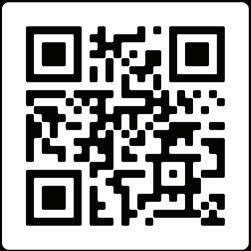


by Simran Khanuja
For almost 11 years, Beau lived with a challenge most dogs never face: he could barely open his mouth. An injury as a puppy left his jaw nearly immobile, forcing him to adapt in ways his owners, Renee and Art Cybul, never expected.
Beau’s journey began in 2013, when, at five months old, another dog bit him at a grooming facility. The injury initially seemed minor, but a week later, Beau couldn’t pick up his favorite ball. A veterinarian confirmed blunt force trauma, but the only suggested solution felt too extreme. Instead, the Cybuls were assured that Beau would adapt. And he did, learning to eat from the side of his mouth and flicking water into his mouth due to the inability to stick out his tongue.
For years, Beau lived happily despite his condition – until he began bleeding from his nose last year. The Cybul’s veterinarian suspected a dental issue but antibiotics only temporarily stopped the bleeding, so they consulted a specialist who recommended surgery. That facility did not have overnight care or an anesthesiologist, so they turned to UW Veterinary Care (UWVC).
At UWVC, a team of clinicians, residents, and students – including Kyle Bartholomew (DVM’17), Adrianna Sage and Elias Wolfs (all from the Department of Surgical Sciences), Taylor Weary (DVMx’25), Kate Kudrna (’19 DVM’23; resident in Dentistry and Oral Surgery), and Olivia Harris (DVM’21; resident in Anesthesiology) – collaborated closely on Beau’s case, requiring coordination between specialties.
“Not having easy access to Beau’s mouth complicated not only oral procedures but even anesthesia,” says Weary. “The whole team was ready for any situation that might arise.”

Beau, an 11-year-old Poodle, got to experience normal daily activitieseating, drinking, barking, and groomingmore fully in his final months, thanks to the collaboration of a multi-disciplinary team of specialists at UW Veterinary Care.
Kudrna said having all hands-on deck ensured that every aspect of Beau’s care – from his pre-operative CT scan to surgery and recovery – was tailored to his needs.
“We had multiple conversations between dentistry and anesthesia to coordinate this case, including backup plans for intubation, recovery, and more,” says Sage.
The resulting procedure was a success: for the first time in his adult life, Beau could fully open his mouth. He rediscovered the joy of eating from a bowl.
“When he barked for the first time, he scared himself – and then he barked the whole day,” Renee Cybul says with a laugh. Beau’s family cherished every moment of his recovery. But soon after, they received heartbreaking news: a cancer diagnosis. The Cybuls made the difficult decision not to pursue further treatment, and Beau was euthanized shortly after.
Despite his sad outcome, his family and his care team were grateful Beau experienced life more fully in his final months.
“Beau’s family said it was like watching a toddler learning to walk,” says Weary. “The great thing about animals is they live in the present. Having that period of comfort and play was not dulled by resentment about the past. To him, it was just joy.”
Beau’s case highlights the power of specialized veterinary care. Through the collaboration of UWVC’s dentistry, surgery, anesthesia, and emergency teams, Beau was given the chance to live life more fully, even if only for a short time.
“Our procedure helped Beau experience things most dogs take for granted,” says Kudrna. “I’m so grateful we could give him that chance.”

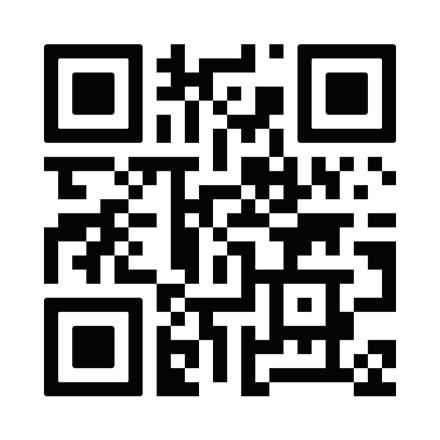
2015 Linden Drive
Madison, WI 53706-1102
Every day, our pets give us the greatest gift we could ask for: UNCONDITIONAL
No questions asked, no strings attached.
Pet Week is your chance to give back in honor of all the love your pet gives you. Your gift supports:
State-of-the-art diagnostic and technological equipment

Clinical research studies that save and extend the lives of pets and their people
Exceptional education and training for the next generation of trusted veterinarians

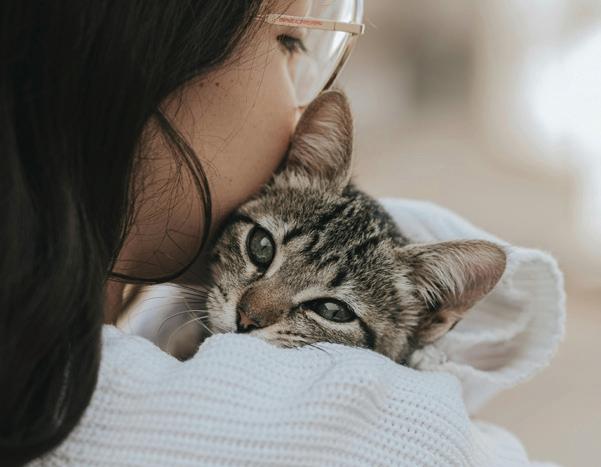
Unmatched, compassionate clinical care for all who visit our veterinary teaching hospital
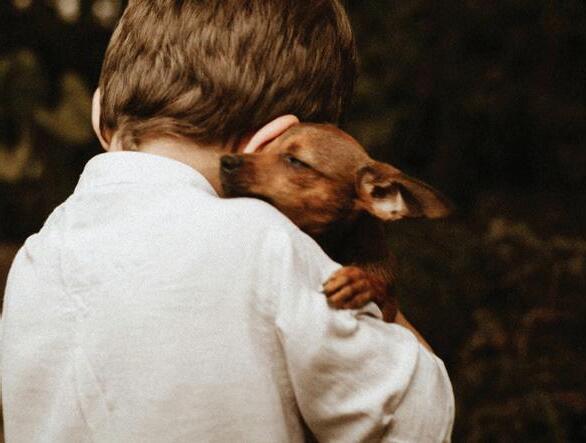
Celebrate a lifetime of unconditional love with a GIFT IN HONOR OF PET WEEK.
